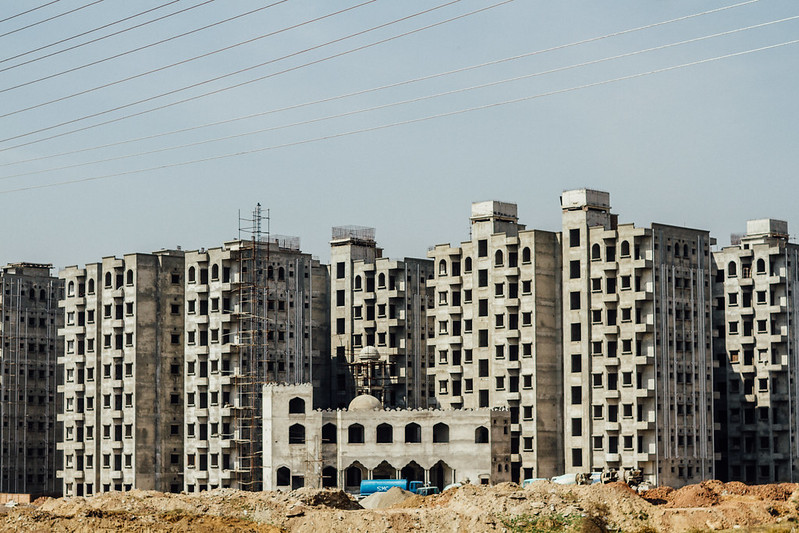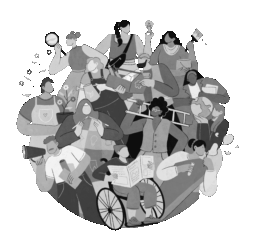Growing Urbanisation in Pakistan: Challenges and Opportunities
Pakistan is urbanising at an increasingly rapid rate – as of 2023, almost 40% of the population lived in urban areas. This poses major challenges, in relation to such things as housing, essential services, pollution, and security. However, it also presents major opportunities for economic growth and poverty reduction.
The goal for Pakistan is to find ways to minimise the negative impact and maximise the positive effects of urbanisation. The evidence of these potentials is explored in our report ‘Urbanisation Trends in Pakistan and Impact on Development Progress’. Here’s what we found.

Pakistan’s urbanisation: scale and drivers
Pakistan’s census in 2023 found that the total population was 241.9 million, of whom nearly 40% were in urban areas. While this proportion is comparable to other South Asian countries, the rate of urban growth in Pakistan is the fastest in the region. Between 2017 and 2023, the overall population grew by 2.55%, but the urban population by 3.57%. There are now 22 Pakistani cities with a population of 500,000 or more, up from 14 in 2017. Of the four provinces, Punjab has the highest number of urban residents.
Why is Pakistan urbanising so quickly? Historically, conflict has been a main driver of urbanisation in the country. This started with Partition and independence in 1947, when millions of Indian Muslims were displaced across the new border into its cities. Similarly, the 1979 Soviet invasion of Afghanistan, and later counter-terrorism operations in the tribal belt, have pushed many people to cities, notably to Peshawar, Quetta and Karachi.
More recently, climate change effects are pushing people to urban areas: drought, large-scale floods (such as the devastating floods of 2022), and extreme weather events are all eroding rural livelihood sources. Rural residents also move in search of a better quality of life, and there is natural population growth.
Negative effects: cities under stress
Pakistan’s cities were not prepared for the historic influxes or for more recent arrivals. The country’s rapid urbanisation has thus had knock-on negative effects on development. The evidence used in our report shows that the ability of cities and urban areas to deliver essential services such as water and sanitation, healthcare and education – already difficult – comes under increasing strain. The housing deficit has created vast urban slums, while jobs are often insufficient or low-income. Pakistan’s cities do contribute significantly to the economy, but urban inequality means there are high levels of urban poverty. Urbanisation also exacerbates problems with congestion and pollution. And there are security implications, with increased risk of political violence and radicalisation or extremist violence.
Positive potential of urbanisation
International experience shows that urbanisation is associated with high growth, with a number of factors involved. Firstly, people in urban areas have better access to healthcare, education, as well as access to transport, the internet and electricity. All these factors contribute to higher productivity and poverty reduction.
Secondly, urbanisation provides opportunities for agglomeration (geographic concentration of economic activity), which contributes to specialisation, knowledge exchange, economies of scale and entrepreneurship. The city of Sialkot, for example, is renowned for the production of sporting goods and surgical equipment. Productive urban areas have positive spillover effects on rural areas, such as through remittances.
Thirdly, Pakistan has a very young population, so its urban areas have the additional potential to realise a ‘demographic dividend’ (possible when a country has a high proportion of people of working age, and a small share of dependents, such as the elderly). However, this requires investment in education, skills and job creation.
Government commitments and approaches
The Government of Pakistan’s Vision 2025 aims to transform ‘urban areas into creative, eco-friendly sustainable cities’ and to make urbanisation an important driver of growth. Specific measures to bring this about include: revision of zoning laws; development of the housing sector (especially low-cost housing); expansion of public services; development of mass transit systems; and promotion of ‘smart’ cities through the use of data and technology. In addition, empowering municipal governments to raise more of their own revenue, and building their capacity for urban planning and management, can make a significant difference. The private sector also has to play a role: there is huge potential for public-private partnerships, such as in housing, services and transport.
Donor interventions
Various donors are supporting sustainable urbanisation in Pakistan. The Asian Development Bank, for example, is funding two major cities’ improvement programmes in Punjab and Khyber Pakhtunkhwa respectively. Both focus on intermediate cities, and seek to build capacity as well as improve water supply, sanitation, solid waste management and transport infrastructure.
There is considerable scope for such donors to help Pakistan realise the positive potential of urban areas, through support for service delivery, capacity building of municipal governments and the private sector.
Looking ahead
What else can be done to realise the potential of Pakistan’s urbanisation? Our report gives some options based on the available literature. One innovative measure would be establishing sister-city partnerships between cities in Pakistan and Europe, in particular those with high Pakistani diaspora populations. Such partnerships would allow the exchange of knowledge, experience and lessons in urban governance, as well as contribute to job creation.
A second finding is that Pakistan could also benefit from best practices in other cities facing similar challenges. The Ahmedabad Bus Rapid Transit System (BRTS) in India, and the transformation of Medellín in Colombia are two such examples of positive change.
